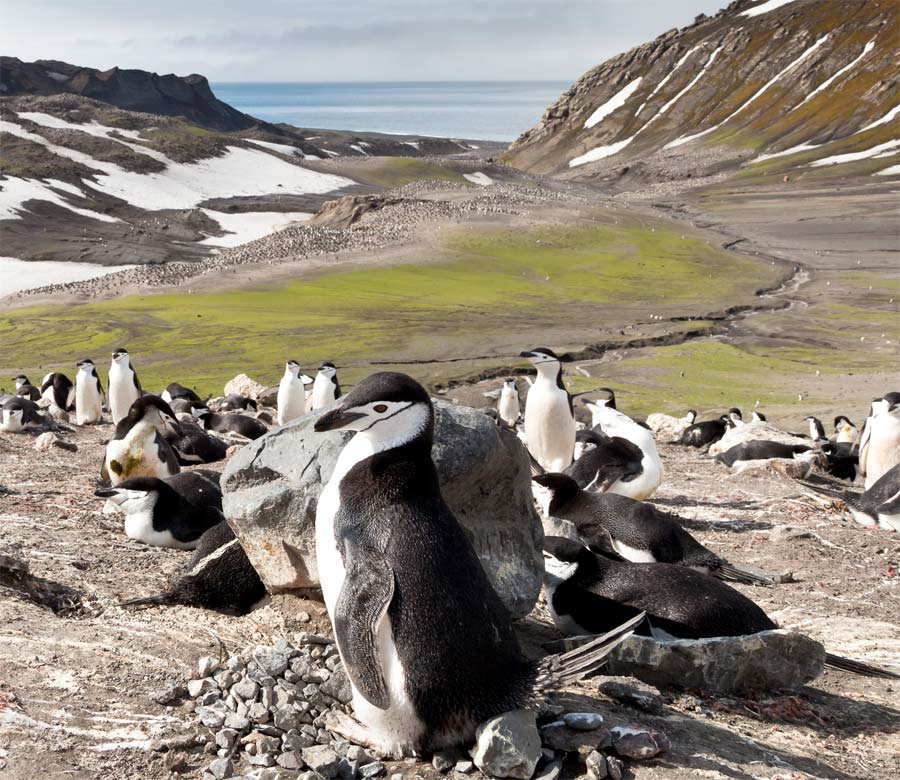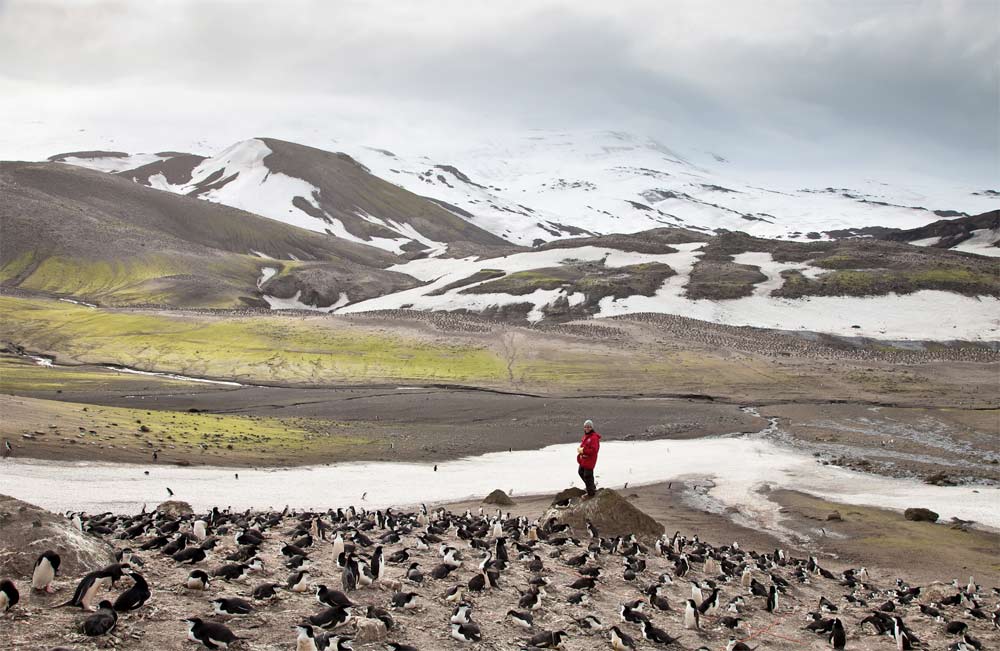Too Hot for Love: Breeding Penguins Vanish from Antarctic Island

In the first complete survey of chinstrap penguins' breeding across Deception Island in the Antarctic, scientists have found a significant number of the chic birds have disappeared from the breeding grounds since the 1980s.
The largest colony, called Baily Head on Deception Island, which is located in the Antarctic's South Shetland Islands, saw a drop of more than 50 percent over the past two decades, the researchers added.
The culprit? The scientists point to climate change.
The study, detailed this week in the journal Polar Biology, complements another recent tally of chinstrap penguins on Deception Island. That survey focused on just one chinstrap colony on Deception, showing that more than one-third of the Vapour Col colony had vanished in the past 20 years. [Photos: Chinstrap Penguins on Deception Island]
In the new study, Heather Lynch, assistant professor of ecology and evolution at Stony Brook University, and her colleagues surveyed the entire island in December 2011. Field work in Antarctica is not for the faint of heart; the 12-day period of their work using the yacht Pelagic as a base station, occurred "in the harshest of conditions — persistent clouds, precipitation and high winds, the latter sometimes reaching gale force and requiring a lot of patience waiting out the blows," said study researcher Ron Naveen, founder of the nonprofit science and conservation organization Oceanites, Inc. "But, in the end, we achieved the first-ever survey of all chinstraps breeding on the island."
The team estimated 79,849 breeding pairs of chinstrap penguins at Deception, including 50,408 breeding pairs at Baily Head.
"We combined our field count with an analysis of satellite image analysis showing for the first time that satellite image census estimates are indistinguishable from ground counts," Lynch told LiveScience in an email, referring to the Baily Head numbers."
Get the world’s most fascinating discoveries delivered straight to your inbox.
Then, by comparing the updated numbers with previous population estimates (after accounting for uncertainty), the researchers found strong evidence of a more than 50 percent decline in the abundance of chinstraps breeding at Baily Head since 1986-87.
The study also seems to clear up, at least for the Baily Head colony, a concern that tourism may be harming the birds.
"While there has been considerable focus in the policy and management community about the potential impact of tourism on these penguin populations, we cannot forget the overwhelming evidence that climate is responsible for the dramatic changes that we are seeing on the Peninsula," Lynch said in a statement. "If tourism is having a negative impact on these populations, it’s too small an effect to be detected against the background of climate change."
In the 1990s, some thought the melting sea ice would favor chinstrap penguins, which, unlike Adélie penguins, prefer the ice-free waters. However, the sea-ice decline in the winter has reached a point where it is impacting the penguins' favorite food, krill, said Andres Barbosa, of the National Museum of Natural Sciences in Madrid, who conducted the Vapour Col study.
The new study is part of the Antarctic Site Inventory project, which has been collecting and analyzing Antarctic Peninsula-wide penguin population data since 1994.
Follow LiveScience on Twitter @livescience. We're also on Facebook & Google+.
Jeanna Bryner is managing editor of Scientific American. Previously she was editor in chief of Live Science and, prior to that, an editor at Scholastic's Science World magazine. Bryner has an English degree from Salisbury University, a master's degree in biogeochemistry and environmental sciences from the University of Maryland and a graduate science journalism degree from New York University. She has worked as a biologist in Florida, where she monitored wetlands and did field surveys for endangered species, including the gorgeous Florida Scrub Jay. She also received an ocean sciences journalism fellowship from the Woods Hole Oceanographic Institution. She is a firm believer that science is for everyone and that just about everything can be viewed through the lens of science.



